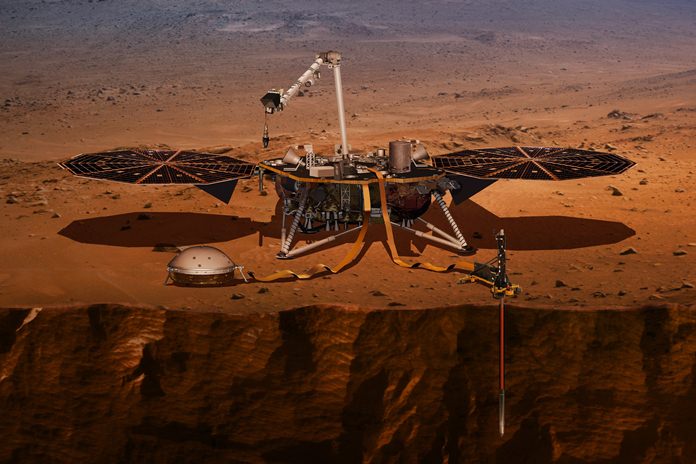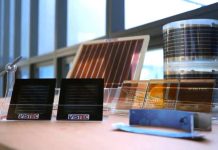
Cape Canaveral, Fla. (AP) — A robotic geologist armed with a hammer and quake monitor is rocketing toward Mars, aiming to land on the red planet and explore its mysterious insides.
The NASA spacecraft, launched on May 5, will take more than six months to get to Mars and start its unprecedented geologic excavations, traveling 300 million miles (485 million kilometers) to get there.
InSight will dig deeper into Mars than ever before — nearly 16 feet, or 5 meters — to take the planet’s temperature. It will also attempt to make the first measurements of marsquakes, using a high-tech seismometer placed directly on the Martian surface.
“That’s the real payoff of this whole mission and that’s still lying ahead of us,” said the mission’s chief scientist, Bruce Banerdt of NASA’s Jet Propulsion Laboratory in Pasadena, California.
Launched at the same time a pair of mini test satellites, or CubeSats, are trailing InSight to Mars to serve as a potential communication link. The twin briefcase-sized spacecraft are nicknamed WALL-E and EVE from the 2008 animated movie.
NASA hasn’t put a spacecraft down on Mars since the Curiosity rover in 2012. The U.S., in fact, is the only country to successfully land and operate a spacecraft at Mars. It’s tough, complicated stuff. Only about 40 percent of all missions to Mars from all countries — orbiters and landers alike — have proven successful over the decades.
If all goes well, the three-legged InSight will descend by parachute and engine firings onto a flat equatorial region of Mars — believed to be free of big, potentially dangerous rocks — on Nov. 26. Once down, it will stay put, using a mechanical arm to place the science instruments on the surface.
Banerdt said Mars is ideal for learning how the rocky planets of our solar system formed 4.5 billion years ago. Unlike our active Earth, Mars hasn’t been transformed by plate tectonics and other processes, he noted. InSight might also help explain why some planets — like ours — went on to develop life, while others did not.
Over the course of two Earth years — or one Martian year — NASA expects InSight’s three main experiments to provide a true 3-D image of the interior of Mars. Scientists know Mars has an iron core and a crust, but beyond that, the inside is “basically, completely unknown,” said Banerdt.
The lander is equipped with a seismometer for measuring marsquakes, a self-hammering probe for burrowing beneath the surface, and a radio system for tracking the spacecraft’s position and planet’s wobbly rotation, thereby revealing the size and composition of Mars’ core.
“InSight, for seismologists, will really be a piece of history, a new page of history,” said the Paris Institute of Earth Physics’ Philippe Lognonne, lead scientist of the InSight seismometer.
Problems with the French-supplied seismometer kept InSight from launching two years ago.
 |
 |





